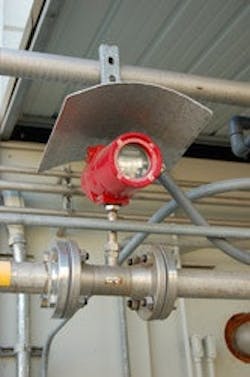Saving Energy in Dallas
| Related Searches from WaterInfoLink.com Sierra Instruments | Mass Flow | Dallas, Texas | Aeration | Thermal Meter |
Like most industrial processes, wastewater treatment plants around the nation are feeling the crunch of high energy costs. In the wastewater treatment industry, the electricity required to run the blowers in aeration basins accounts for 45% to 50% of the plant’s typical operating costs. Since the aeration process is the heavy hitter in terms of energy cost, wastewater treatment plants have been attacking the problem with thermal mass flow meters for huge savings.
A wastewater treatment plant in Dallas has substantially lowered energy costs through more efficient aeration basin flow monitoring using Sierra Instruments’ immersible thermal mass flow measurement technology.
In 2003, Dallas worked with Sierra to retrofit its aeration basins with the Model 640S immersible thermal mass flowmeters . With the thermal technology installed, the city can measure true mass flow directly with one instrument, have outstanding 40:1 rangeability, an accuracy of +/- 1.0% of reading plus 0.5% full scale and repeatability of +/- 0.2% of full scale.
In the critical secondary stage of wastewater treatment, the sewage leaves the settling tank and is pumped into an aeration tank, where it is mixed with air and bacteria-laden sludge. The sewage remains in the aeration basin for several hours while the microorganisms do their work. These microorganisms utilize dissolved oxygen during the process of oxidizing the organic material in the waste for endogenous respiration (microorganisms eating other microorganisms) and from nitrification (the conversion of ammonia to nitrate).
The mass flowmeters were installed on headers and airlines to control the precise mass flow rate of air and as a result, controlling the oxygen bubbling into the aeration tanks. The Dallas wastewater treatment plant was able to maintain optimal dissolved oxygen levels. Failure to provide this type of accuracy can result in destruction of the culture and inadequately treated effluent discharge. This leads to environmental damage, fines and the negative health effects of improperly treated water.
In one case study, aeration basins were upgraded with the thermal meters as a key input into the control loop in a 7.8-million-gal-per-day plant that treats both industrial and domestic wastewater. The company saved approximately $50,000 a year in aeration costs and reduced chlorination and pH adjustment costs as an added benefit. Total nitrogen removal was nearly accomplished and resulted in improved effluent suspended solids as well.
